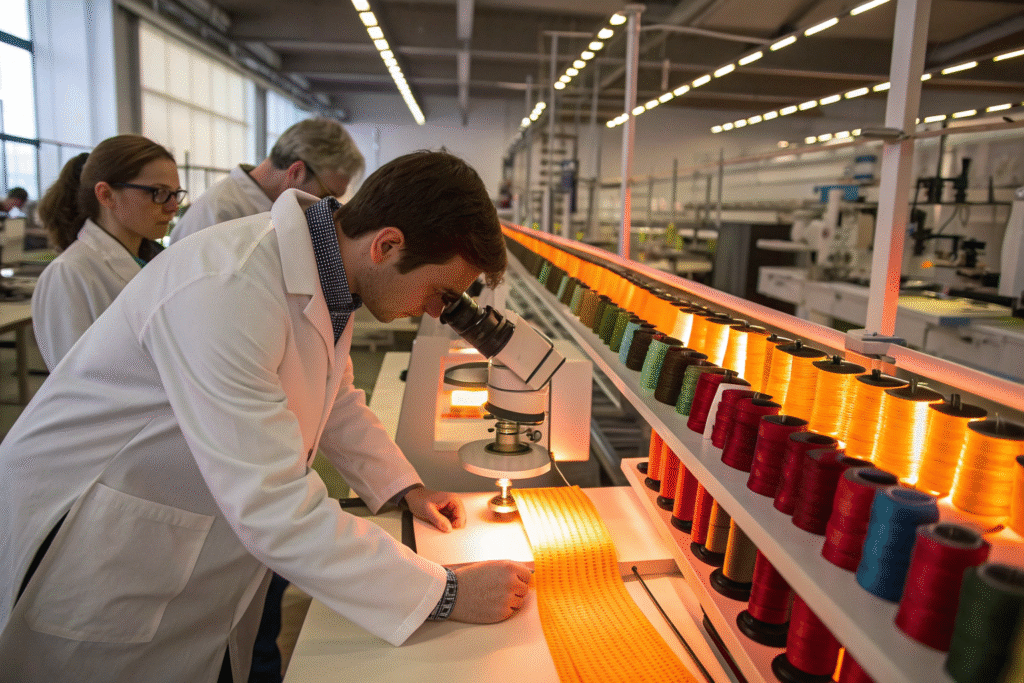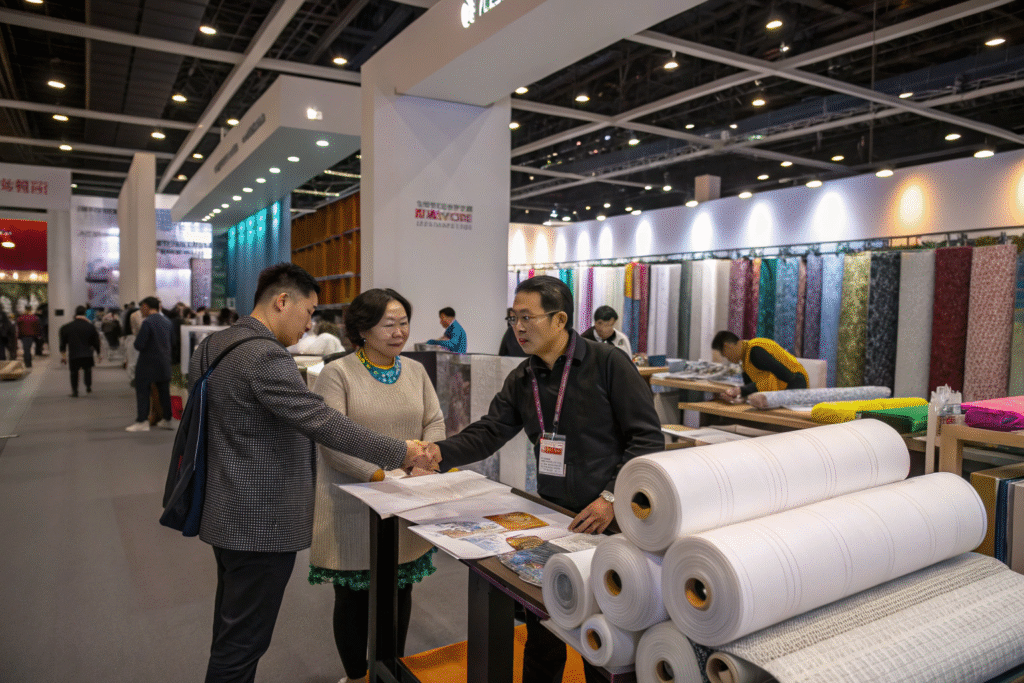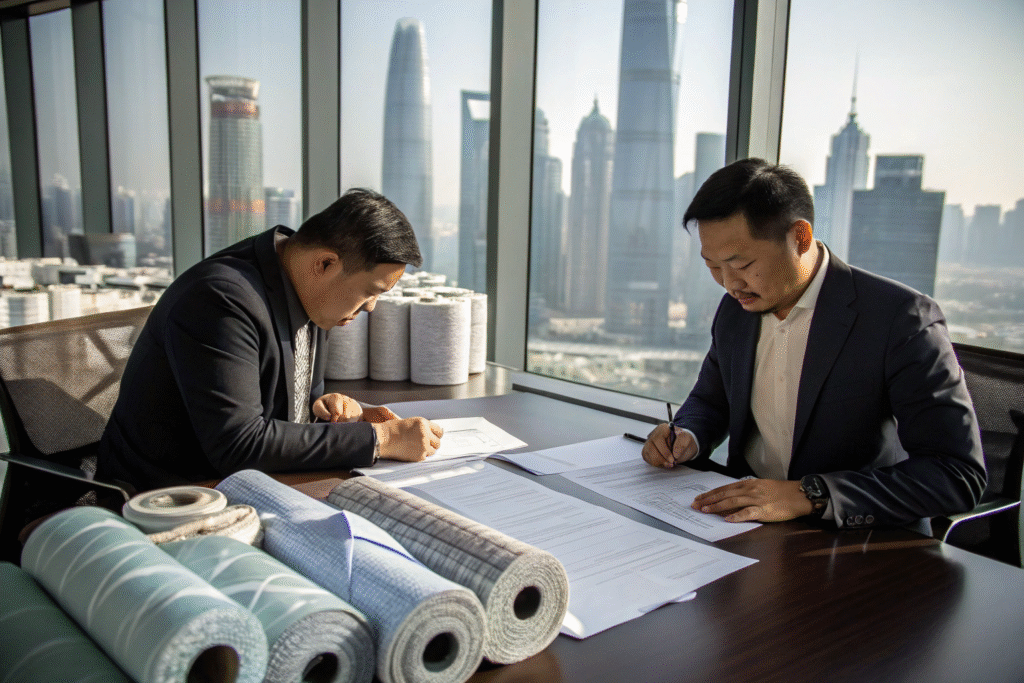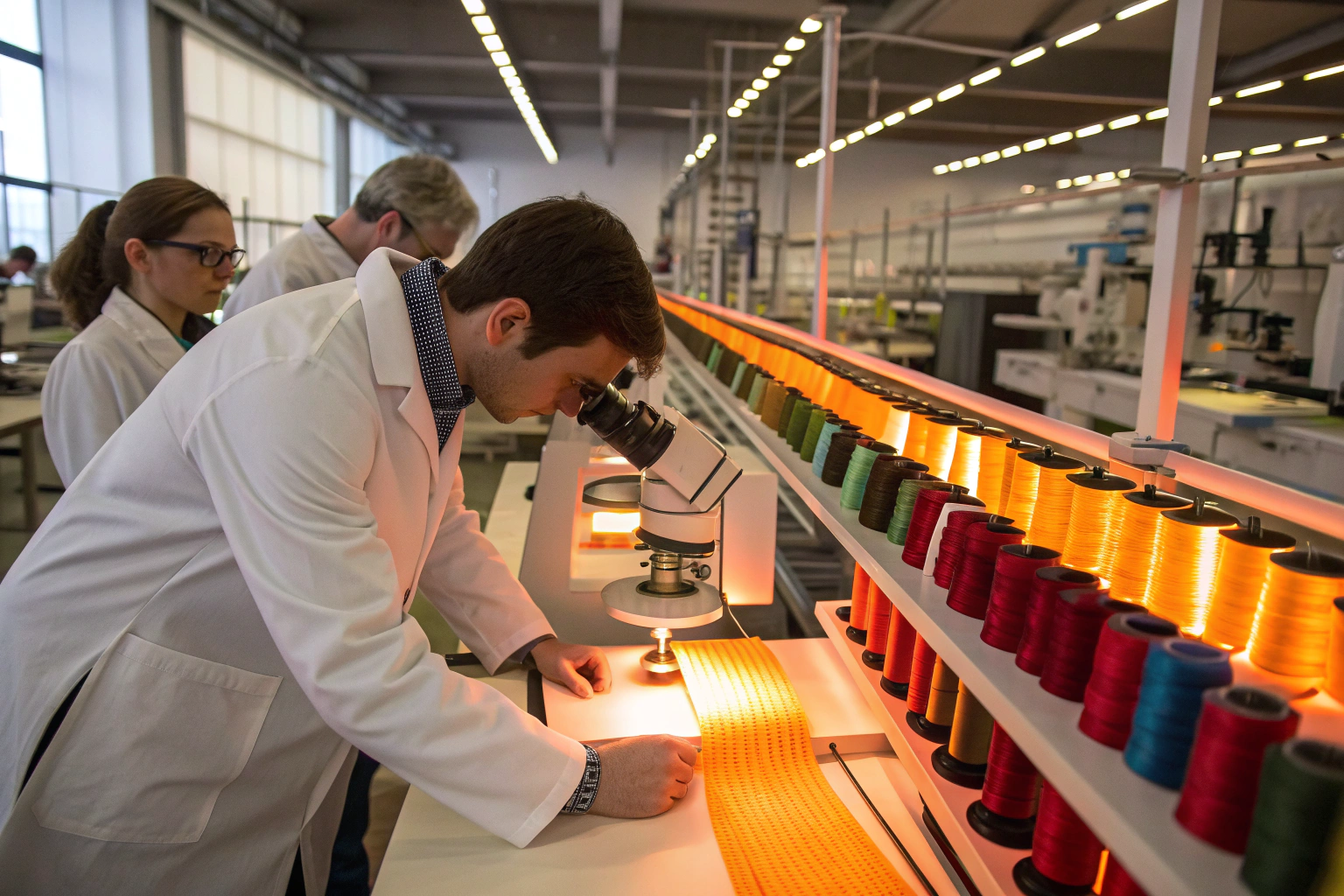In today’s textile world, many buyers and innovators are searching for fabrics that do more than cover the body. One of the most exciting developments is shape-changing liquid crystal elastomer (LCE) textiles, which can contract, expand, or twist when triggered by heat, light, or electricity. For American buyers like Ron, who care about quality and innovation but also face pressure from pricing, tariffs, and logistics, knowing how to source these next-generation fabrics from China or Asia is crucial.
Shape-changing LCE textiles can be sourced through a combination of research partnerships, specialized suppliers, and customized manufacturing processes. They are already being produced in labs like MIT’s FibeRobo project and in research hubs such as Tsinghua and Donghua University. Today, the right approach is to connect with these innovators, align with experienced Chinese manufacturers like ours, and build a supply chain that ensures both performance and scalability.
Because this field is new, buyers must think step by step: first learn the basics of LCE technology, then explore sourcing channels, later address production challenges, and finally build a long-term plan. Let’s break down each part clearly.
What Are Shape-Changing Liquid Crystal Elastomer Fabrics?
Shape-changing liquid crystal elastomers are soft, smart materials that combine the elasticity of rubber with the ordered structure of liquid crystals. When exposed to heat or light, they contract, bend, or twist and then return to their original form. Unlike conventional textiles, they give fabrics an ability to move and adapt on their own.
These fabrics are made from liquid crystal elastomer fibers that are compatible with weaving, knitting, and embroidery machines. Universities like MIT have proven that the cost can be kept low—around $0.20 per meter—while achieving contraction of up to 40%. This means they are realistic for fashion, sportswear, and even medical applications.

Since researchers are continuously exploring new blends of LCE with nanoparticles, dyes, and coatings, sourcing depends not only on finding suppliers but also on understanding the innovation pipeline that ensures future improvements.
How Do LCE Textiles Respond to Heat and Light?
Liquid crystal elastomers align their molecules in a way that allows them to contract or expand with small temperature changes. For example, MIT’s FibeRobo fiber shrinks when heated and relaxes when cooled. This creates applications in adaptive clothing, such as compression garments or sports bras that change support based on activity. Learn more about this research from MIT News and the Nature publication.
By contrast, light-based response comes from nanoparticles. Researchers at Donghua University made fibers that react to different wavelengths of light, enabling fabrics that move under green, infrared, or near-infrared light. This is particularly important because it opens paths for anti-counterfeiting embroidery and biomimetic design (Materials Horizons).
Why Are LCE Fabrics Considered the Future of Smart Textiles?
Because they combine comfort, performance, and intelligence, LCE textiles are predicted to shape the future. Athletes can benefit from self-adjusting apparel, medical patients can wear garments that provide adaptive therapy, and fashion brands can create dynamic, moving designs. Harvard’s study in Science confirmed that these materials can even follow multi-step programmed movements.
As a result, buyers who source these materials early gain a stronger position in innovation-driven markets.
Where Can You Find Reliable Suppliers for LCE Textiles?
Because this material is still in the early stage of commercialization, sourcing requires a hybrid strategy that connects research institutions with industrial-scale manufacturers. In other words, buyers must combine science with production.
The most reliable suppliers are linked to universities, research labs, or advanced textile hubs. In Keqiao, Zhejiang—where our company is located—factories already have the weaving, dyeing, and finishing infrastructure to integrate LCE fibers into real fabrics.

Therefore, sourcing is less about chasing the cheapest price and more about building long-term partnerships to secure quality, certifications, and consistent delivery.
Can You Source LCE Fabrics from Universities and Research Labs?
Yes. Universities often provide the first samples. MIT’s FibeRobo project shows the possibility of industrial-scale fibers at low cost. Tsinghua University has explained different spinning techniques for LCE fibers (ScienceDirect). These institutions can supply samples or sign collaboration agreements.
Consequently, buyers who connect early can access exclusive innovations before they reach the mass market.
What Should You Check Before Choosing a Commercial Supplier?
Before confirming a supplier, you must check certifications and production readiness:
- ISO and CNAS certification
- Capacity to scale from small runs to bulk
- Experience in elastomer processing
- Reports on shrinkage ratio and cycle stability
Commercial listings are available on GlobalSpec and Alibaba, but because this is a new field, you should always validate with independent tests.
What Are the Challenges of Sourcing Shape-Changing Fabrics?
Even though LCE textiles are promising, buyers face unique challenges. Since production is still emerging, costs remain high, timelines are long, and specialized finishing is required.
These barriers exist because the technology is young, but companies that overcome them first will gain early-mover advantages.

This means that every sourcing plan must address costs and logistics step by step.
Why Are Production Costs Still High?
Production requires two-step cross-linking, nanoparticle integration, or UV curing, which adds complexity compared to polyester or cotton. Even though MIT estimates $0.20 per meter in materials, real industrial scaling is more expensive. This is why suppliers ask for minimum orders to justify production.
Therefore, smart buyers negotiate small-batch trials first and consider cost-sharing on R&D. Useful references include Nature Materials and ScienceDirect.
What About Timelines and Logistics?
Timelines are longer because most production remains semi-experimental. Lead times may take three to six months. Moreover, logistics involve customs and tariff concerns. However, sourcing from hubs like Keqiao ensures access to multimodal shipping and customs clearance support.
As a result, building strong logistics partnerships is as critical as choosing the right fiber supplier. Updates on tariff exemptions can be found at USTR.gov.
How to Build a Long-Term Strategy for Smart Fabric Sourcing?
Finally, since sourcing LCE is not a one-time purchase, success depends on long-term partnerships. Buyers must invest in research collaboration, supplier stability, and ongoing development.
Strategic agreements ensure you influence fiber design, gain exclusivity, and secure your competitive advantage.

By treating LCE sourcing as an investment, buyers prepare for sustainable success.
Should You Invest in Joint R&D With Suppliers?
Yes. Because big brands like Lululemon and Nike are already exploring smart fabrics, buyers who co-invest gain direct access to innovation. Partnering with Chinese manufacturers linked to universities allows you to shape product development. Explore more about partnerships at Core77.
Thus, R&D investment provides not only fabric access but also influence over standards and patents.
How Can Buyers Protect Against Market Risks?
Risks exist because regulations and patents are still evolving. To manage this:
- Sign multi-year supply contracts
- Require OEKO-TEX and REACH certifications
- Diversify sources across regions
- Monitor sustainability incentives and tariff updates
Reliable references include Textile Exchange and OEKO-TEX.
Conclusion
Shape-changing liquid crystal elastomer textiles are no longer just experimental. They already exist in labs and pilot production lines. They offer huge opportunities for adaptive sportswear, medical therapy garments, and futuristic fashion. Because sourcing requires careful planning, buyers must combine academic partnerships, supplier validation, and logistics management.
At Fumao Fabric, we already work with innovative functional fabrics and eco-certified production. If you want to explore shape-changing textiles or co-develop smart projects, please contact our Business Director Elaine at elaine@fumaoclothing.com. By working together, we can help you build the next generation of fabrics.










